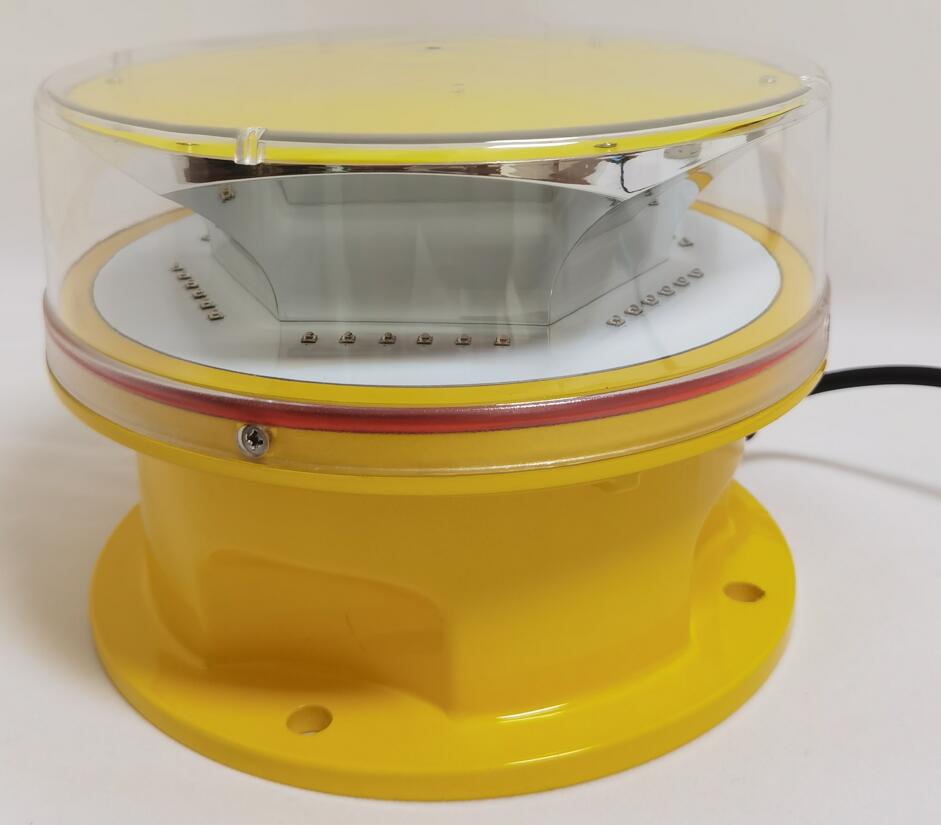As the aviation industry moves toward sustainability, solar aviation lamps have emerged as a key innovation in obstruction lighting. These energy-efficient, solar-powered lights provide reliable visibility for towers, wind turbines, and other tall structures while reducing environmental impact. This article explores the benefits, applications, and technological advancements of solar aviation lamps, highlighting their role in modern aviation safety.
Why Solar Aviation Lamps Are Essential
Traditional obstruction lighting relies on grid electricity, which can be costly and unreliable in remote locations. Solar aviation lamps solve these challenges by:
Reducing Energy Costs: They operate independently of the electrical grid, lowering operational expenses.

Enhancing Reliability: With no dependency on external power sources, they function even during outages.
Minimizing Environmental Impact: Solar-powered systems reduce carbon emissions compared to conventional lighting.
| Solar Aviation Lamp |
These advantages make solar aviation lamps ideal for structures in off-grid areas, such as communication towers, wind farms, and rural airports.
FAA Compliance and Standards
The Federal Aviation Administration (FAA) mandates strict lighting requirements for obstructions under 14 CFR Part 77. Solar aviation lamps must meet the same visibility and intensity standards as traditional lights, including:
| Solar Aviation Lamps |
L-810 (Red Obstruction Lights): For structures under 500 feet.
L-864 (Medium-Intensity White Strobes): For taller structures.
L-856 (High-Intensity White Strobes): For very tall obstacles.
Modern solar aviation lamps incorporate LED technology to meet these standards while consuming minimal power.
Key Features of High-Quality Solar Aviation Lamps
When selecting a solar aviation lamp, consider the following features:
High-Efficiency Solar Panels: Ensure maximum energy conversion even in low sunlight.
Long-Lasting Batteries: Lithium-ion or gel batteries provide extended operation during cloudy days.
Automatic Light Sensors: Enable dusk-to-dawn operation without manual intervention.
Durable Construction: Weather-resistant materials (e.g., aluminum, polycarbonate) withstand harsh conditions.
Remote Monitoring: IoT-enabled systems allow real-time performance tracking.
Applications of Solar Aviation Lamps
These lamps are widely used in:
Telecommunication Towers: Ensure visibility for low-flying aircraft.
Wind Turbines: Prevent collisions in wind farms near flight paths.
Airport Obstructions: Mark cranes, buildings, and other temporary hazards.
Bridges and Power Lines: Enhance safety for helicopter routes.
Advancements in Solar Aviation Lighting
Recent innovations include:
Dual Solar-Grid Hybrid Systems: Combine solar power with grid backup for uninterrupted operation.
Smart Diagnostics: Self-checking systems alert maintenance teams to malfunctions.
Improved Battery Tech: Longer lifespan and faster charging capabilities.
Challenges and Solutions
While solar aviation lamps offer many benefits, challenges such as battery degradation and low winter sunlight exist. Solutions include:
Optimized Panel Angles: Maximize sunlight absorption.
Energy-Efficient LEDs: Reduce power consumption.
Battery Heating Systems: Prevent cold-weather performance drops.
Solar aviation lamps represent a sustainable and cost-effective solution for obstruction lighting. By complying with FAA standards and leveraging advanced solar technology, these lamps enhance aviation safety while supporting green energy initiatives. As solar efficiency improves, their adoption will continue to grow, making skies safer and cleaner for future generations.
Investing in high-quality solar aviation lamps ensures regulatory compliance, operational reliability, and environmental responsibility—key priorities for modern aviation infrastructure.